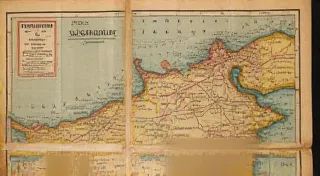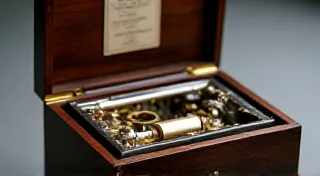Collecting Vintage Board Games: A Journey Through History, Rarity, and Play
Welcome to a captivating exploration of the world of collectible board games! This website is dedicated to the fascinating hobby of board game collecting, delving into their games history, rarity, and the unique cultural significance they hold. Whether you're a seasoned collector, a curious historian, or simply enjoy the nostalgia of classic antique games, you’re in the right place. Let's uncover the stories etched into cardboard, the artistry in hand-painted pieces, and the echoes of laughter that resonate from these treasured artifacts of play.
The Allure of the Past: Why Start Board Game Collecting?
Collectible board games and treasured antique games offer more than just a nostalgic trip; they represent a fascinating intersection of art, commerce, and cultural history. Starting a board game collecting hobby can be immensely rewarding, offering a unique blend of historical exploration, akin to decoding rare and misprinted variants, and appreciation for the subtle nuances of design, much like an aesthetic analysis of vintage board game design. The process isn't merely about accumulating pieces of cardboard; it’s about connecting with a lineage of human ingenuity, creativity, and the enduring appeal of play. It’s about understanding how games reflected, shaped, and entertained previous generations, providing a tangible link to the past. Consider the sheer variety: from elaborate Victorian parlor games to streamlined mid-century family favorites, each piece holds a unique story. The thrill of the hunt, the satisfaction of uncovering a rare gem, and the joy of sharing these treasures with others all contribute to the enduring allure of vintage board game collecting.
A Timeline of Play: Exploring Different Game Eras
Collectible board games and antique games span diverse eras, each contributing significantly to games history. The earliest forms of board games date back thousands of years, but the focus here is on the era of manufactured games, which saw a significant surge in popularity during the Victorian era and continued to evolve through the 20th century. Victorian parlor games were often elaborate affairs, designed to entertain large groups and reflect the social customs of the time. They frequently involved intricate rules and required a degree of etiquette and decorum. As industrialization advanced, mass production made games more accessible to a wider audience, leading to the rise of family favorites that emphasized simplicity and fun. The mid-century saw a shift towards brighter colors, streamlined designs, and a focus on portability. Each era represents a unique moment in time, reflecting the social, economic, and technological advancements of the age. Consider how the very principles of game mechanics have evolved from the parlor to the prototype, shaped by the societal values and trends of the time. Early games often served a purpose beyond mere entertainment, sometimes reflecting subversive intentions through the strategic design of war games, subtly commenting on political tensions or military strategy. The evolution of game design provides a fascinating window into the changing landscape of leisure and recreation throughout history.
The Aesthetic Landscape of Vintage Games
Beyond the rules and mechanics, the artistry and design of vintage board games are captivating. The artistry isn’t simply decorative; it’s integral to the experience, contributing to the game's narrative and allure. The "Chromatic Ghosts" – the styles and techniques of board game illustration – reveals a vibrant period of artistic expression, often showcasing talented artists whose skills extended far beyond the confines of the game board. Consider the intricate detail in Victorian game illustrations, depicting scenes of grand estates, lavish costumes, and elaborate social gatherings. Compare that to the bold, graphic designs of the mid-century, often influenced by modernist art movements. The choice of colors, typography, and imagery all contributed to the game's overall aesthetic appeal. The intricate details of the resonance of ivory game pieces, often featuring elaborate carvings and embellishments, speak volumes about luxury and craftsmanship of a bygone era. Even seemingly simple instructions, the silent narrative – the language and tone used in the game rules – can hold hidden meanings and reflect the values of the time, often utilizing a formal and somewhat archaic language that adds to the game's old-world charm.
The Mechanical Heart of Vintage Games
Some games moved beyond simple cardboard and dice, incorporating complex mechanisms. These weren't merely games; they were elaborate mechanical devices, often demonstrating impressive feats of engineering and craftsmanship. The beauty of these automata and mechanical marvels, often reflecting the Victorian mind with intricate clockwork designs, is something to behold. The incorporation of moving parts, gears, and levers added a layer of complexity and interactivity to the gameplay experience. These mechanical marvels often incorporated elaborate storylines and characters, further enhancing the immersive quality of the game. The ephemeral nature of tinplate games, prone to damage due to the fragility of the material, further adds to their allure, making well-preserved examples particularly valuable and sought-after by collectors.
Remembering the Unsung Heroes
While some games and companies are widely recognized, many remain largely forgotten. The forgotten architects of family game night – the designers, artists, and manufacturers whose contributions shaped the landscape of vintage games – deserve to be remembered. These individuals often worked tirelessly behind the scenes, creating innovative and entertaining games that brought joy to countless families. The stories of these unsung heroes, often shrouded in obscurity, offer a fascinating glimpse into the history of the game industry. Similarly, the regional board game manufacturers, often operating on a smaller scale, played a vital role in producing games for their local communities. Their contributions, often overlooked by mainstream media, helped to diversify the range of games available and fostered a sense of regional pride.
The phantom children who once gathered around the game table, their laughter and excitement now echoes of the past, remind us of the power of games to create lasting memories. These games represent more than just a collection of pieces; they are tangible links to a bygone era, evoking a sense of nostalgia and sentimentality. They are silent witnesses to countless family gatherings, birthday parties, and holiday celebrations. They are reminders of simpler times, when families spent quality time together, disconnected from the distractions of modern technology.


















Games as a Reflection of Society
Vintage board games offer a unique lens through which to view society. They reflect the values, anxieties, and aspirations of different generations. Games fostered social connection and community, providing families with a shared activity and creating lasting memories. The rise of games like Monopoly’s empire tells a story of ambition and opportunity, reflecting the economic realities and social dynamics of the early 20th century. Consider the messages conveyed through game themes and narratives. Some games promoted virtues such as honesty, perseverance, and good sportsmanship, while others offered a more satirical or critical commentary on social issues. The very act of playing together around a board game fostered a sense of togetherness and camaraderie, offering a respite from the stresses of daily life. Families passed down family board game collections across generations, creating a tangible link to the past and preserving a cherished piece of family history.